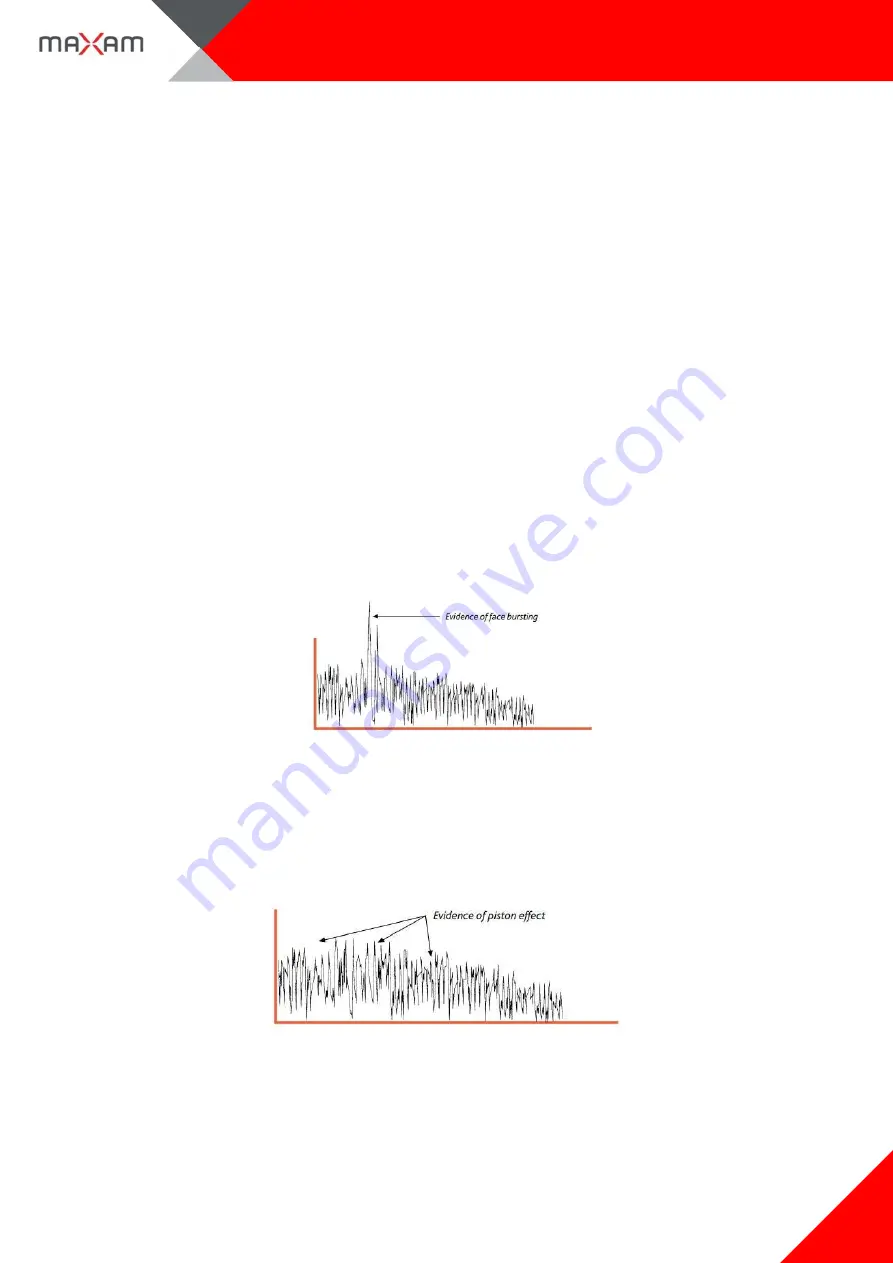
86
RIOTRONIC X+
User Manual
9.2.
Air blast and vibration
9.2.1.
Air blast
This can be a tricky one. It depends on where the air blast is coming from. The first thing to
do is to look at an air blast trace and work out where the maximums are coming from. There
are three main sources of air blast peak:
9.2.2.
Face Bursting
If holes are under burdened, explosive gases can vent into the atmosphere at a higher
pressure than normal. This will cause air blast. This cause of under burdening may be short
drilled burdens or excessive timing along the front row. Short drilled burdens may be fixed
by implementing a controlled face and a blast hole-surveying program. If timing along the
row is too great, an earlier firing hole may open up the face around the next hole causing air
blast. In this case, moving to faster times along the row can help. The following air blast trace
(Figure 113) indicates face bursting, although examination of a blast video would also be
helpful.
Figure 113. Air blast trace from a blast suffering from face bursting
9.2.3.
Piston Effect
The movement of a large volume of rock from a quarry face will push the air in front of it
like a piston. The following trace indicates this (Figure 114).
Figure 114. Air blast trace from a blast suffering from piston effect
In this situation slowing down the times along the face may help to reduce peak air blast.














































